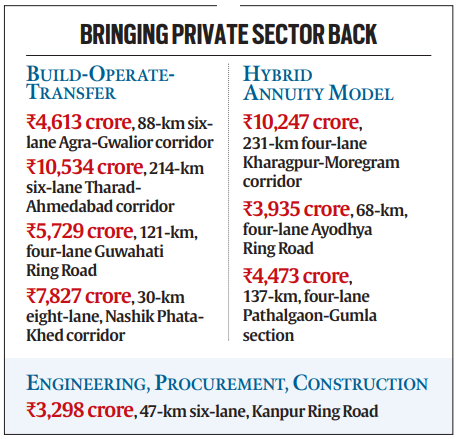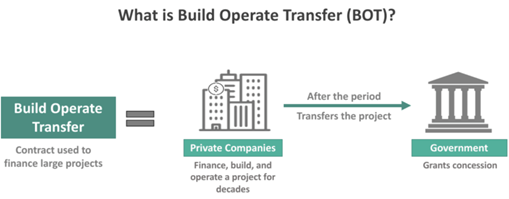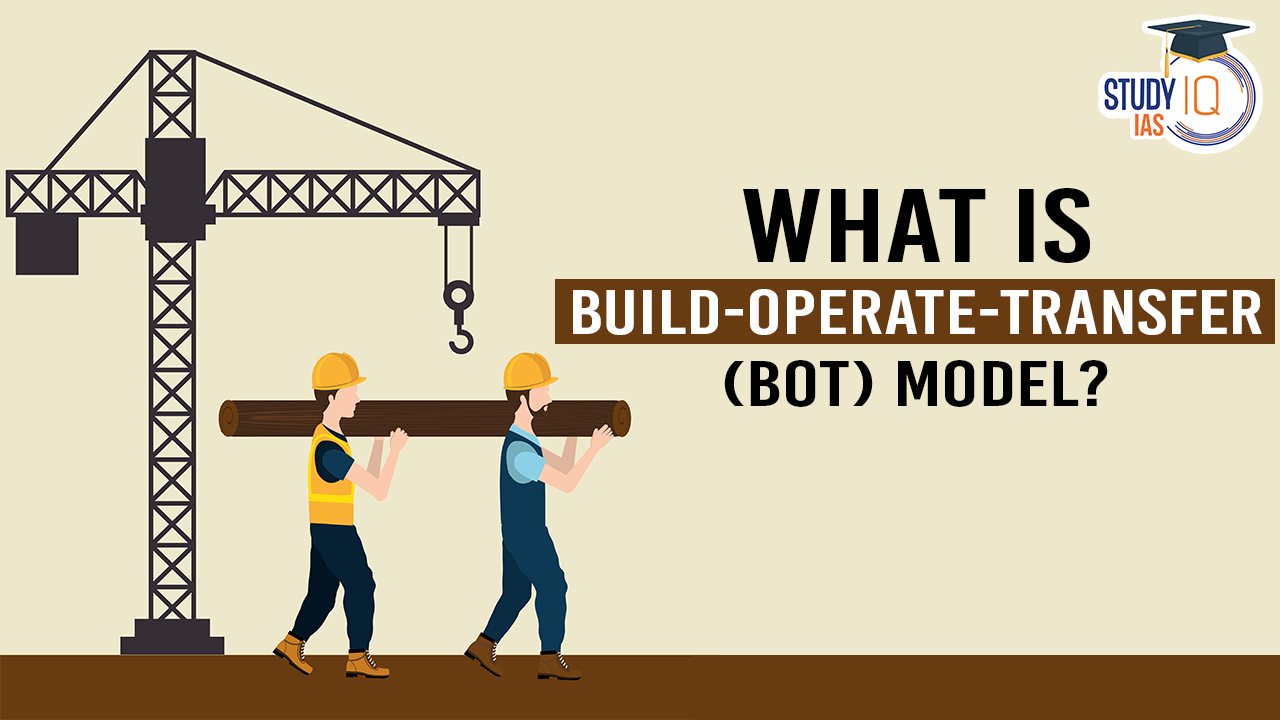Table of Contents
Context: The Union government has approved 8 national high-speed corridor projects at a cost of Rs 50,655 crore.
More in News
- This initiative is expected to generate 4.42 crore man-days of direct and indirect employment.
- 4 of the 8 highways will be executed under the Build-Operate-Transfer (BOT) model.
- The other 4 highways include three Hybrid Annuity Model (HAM) projects and one Engineering, Procurement, and Construction (EPC) project.
About Public-Private Partnership Model (PPP)
- PPPs are collaborations between government and private sector entities for the provision of public assets and services, enabling large-scale projects such as roads, bridges, or hospitals to be completed with private funding.
- In PPPs, private sector entities undertake investments for a specified period.
- PPPs are commonly used for large-scale infrastructure projects like public transportation systems, highways, bridges, hospitals, schools, and parks.
- The government retains full responsibility for providing services, so PPPs do not equate to privatisation.
- There is a clear allocation of risk between the private sector and the public entity.
- Private entities are selected through open competitive bidding and receive performance-linked payments.
- PPPs are particularly beneficial in developing countries where governments face borrowing constraints for essential projects, offering the necessary expertise in planning and execution.
- Advantages:
- Efficiency: Combines private sector efficiency and innovation with public sector accountability and social objectives.
- Expertise: Leverages private sector expertise in areas such as technology and project management.
- Economic Benefits: Can stimulate economic growth by creating jobs and improving infrastructure.
Models of Public-Private Partnership (PPP) in Highway Development

1. Build-Operate-Transfer (BOT)
- Build-Operate-Transfer (BOT) Annuity Model
- The developer builds the highway, operates it for a specified duration, and then transfers it back to the government.
- The government begins payments to the developer after the project starts commercial operations, with payments made every six months.

- Build-Operate-Transfer (BOT) Toll Model
- The developer constructs the road and recovers the investment through toll collection over a period of up to 30 years.
- There is no government payment to the developer; the developer earns revenue solely from tolls.
2. Engineering, Procurement, and Construction (EPC) Model
- The government bears the entire cost of the project.
- The government invites bids for engineering expertise from private players, while it procures raw materials and covers construction costs.
- The model imposes a high financial burden on the government due to full cost responsibility.
3. Hybrid Annuity Model (HAM)
- HAM combines elements of the BOT Annuity and EPC models.
- The government contributes 40% of the project cost over the first five years through annual payments.
- The remaining 60% is paid based on the assets created and the performance of the developer, with the initial 40% paid in five equal instalments and the rest as variable annuity amounts after project completion.
- The developer must raise the remaining 60% of the project cost through equity or loans.
- The National Highways Authority of India (NHAI) is responsible for revenue collection; the developer does not have toll rights.
- HAM provides liquidity to the developer and shares financial risk with the government. The developer bears construction and maintenance risks but only partly bears the financing risk.
- HAM is intended for stalled projects where other models are not suitable.
| What Does Hybrid Annuity Mean? |
| In financial terminology, hybrid annuity means that payment is made in a fixed amount for a considerable period and then in a variable amount in the remaining period. |
Challenges in Public-Private Partnership (PPP) Models
- Policy and Participation:
- Lack of significant success in private participation despite policy measures.
- Infrastructural gaps in almost all sectors, threatening sustained growth.
- Limited success in railways, civil aviation, and social sectors.
- Economic and Financial Constraints:
- Weak regulatory and institutional frameworks.
- Inadequate diligence and appraisal by lenders.
- Financing issues and delays in the issuance of clearances.
- Inappropriate risk allocations and one-size-fits-all approaches to MCAs.
- Aggressive bidding by developers leading to contractual issues.
- Increasing number of non-performing assets (NPAs) held by domestic lenders.
- Infrastructure Leasing & Financial Services (IL&FS) crisis restricting funding options.
- Impact of the global economic slowdown on the demand for goods and services.
- Regulatory and Institutional Issues:
- Inadequate dispute resolution mechanisms.
- Environmental issues delaying project implementation.
- Funding and Investment Challenges: Limited options for domestic lenders and restricted international credit and financing markets.
- Need for innovative instruments and mechanisms to enhance foreign investments.
Way Forward for Revitalising PPPs
- Strengthening Lending Institutions: Enhance the capacities of institutions like India Infrastructure Finance Company, infrastructure debt funds, and the International Finance Corporation (IFC).
- Establish 3P India with a ₹5 billion (US$70 million) corpus to support PPPs.
- Reforming Viability Gap Funding (VGF): Update the VGF scheme to address market challenges and attract more private investment.
- Access to Long-Term Debt: Facilitate access to long-term debt from insurance, pension, and provident fund companies.
- Expand bond markets and use credit enhancement measures through government guarantees.
- Debt Management: Refinance existing debt and restructure non-performing assets (NPAs) of banks.
- Review current restrictions on group exposures of banks to enable more significant investment.
- Enhancing Foreign Investments: Develop innovative instruments and mechanisms to attract foreign capital inflows.
- Offer equity in completed and successful infrastructure projects to long-term investors, including foreign institutional investors.
- Dispute Resolution: Establish the Infrastructure PPP Adjudicatory Tribunal as recommended by the Kelkar Committee for faster dispute resolution.
- Set up independent regulators in sectors lacking them and streamline the roles of existing regulators.
- Model Concession Agreements (MCAs): Review and customise MCAs for each sector to ensure they represent the interests of all stakeholders, including users, project proponents, concessionaires, lenders, and markets.
- Legal Reforms: Amend the Prevention of Corruption Act, 1988, to distinguish genuine errors in decision-making from acts of corruption, preventing witch-hunts against bureaucrats.


 Protection of the Aravalli Range: Import...
Protection of the Aravalli Range: Import...
 Viksit Bharat Shiksha Adhishthan Bill 20...
Viksit Bharat Shiksha Adhishthan Bill 20...
 Jumping Genes: The Revolutionary Discove...
Jumping Genes: The Revolutionary Discove...

























